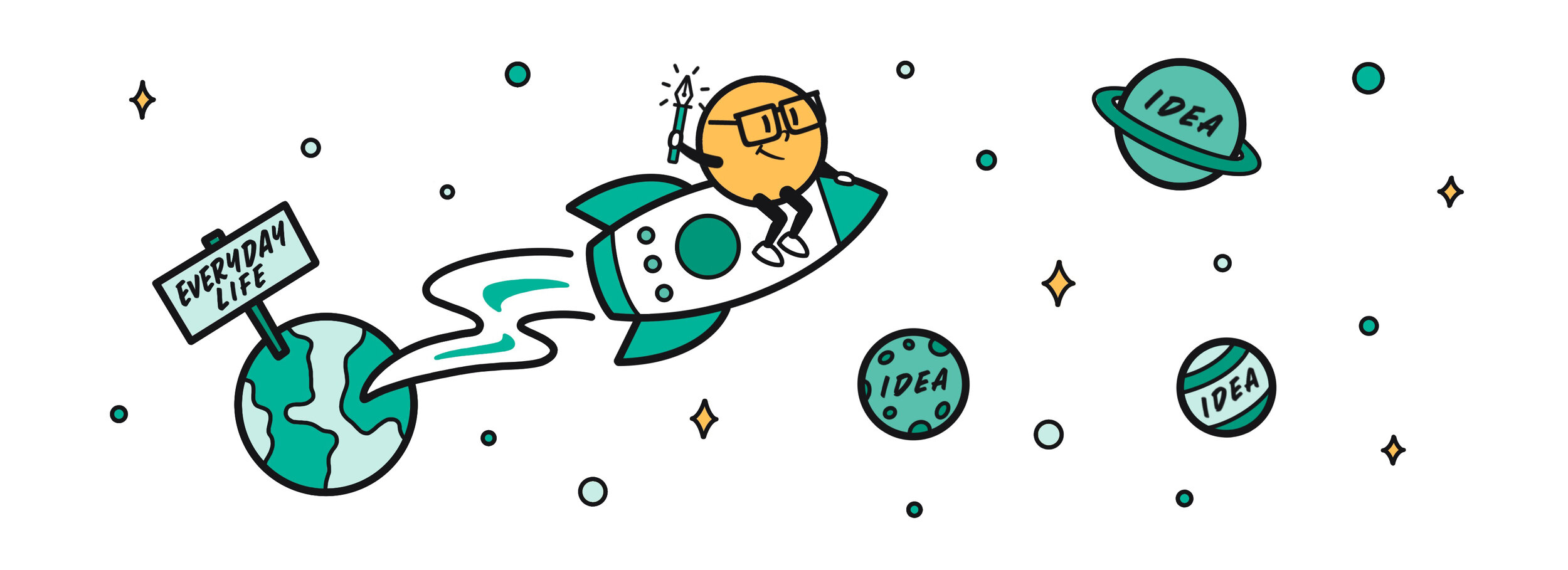The best ideas come when you step away from your busy life.
I used to have terrible habits that led to vicious cycles of anxiety and creative block. I wanted to think of the next best idea. But no idea would come, so I’d scroll for hours on my phone to “get inspiration” or endlessly sketch an illustration that wasn’t sticking. After feeling pretty shitty about my idea, the the anxiety would start kicking in and soon the creative block would smash me in the face again.
But recently I learned the secret to overcoming creative block: Give yourself permission to be bored.
Our minds need a break from the constant stimulations from our devices. It needs time to step away from our routines, let the thoughts and time pass by, and be free from the constant noise.
Take for example, Tony Fadell. He’s an investor and entrepreneur most famously known for creating products like the iPod and Nest. In his interview on the Tim Ferriss Show he says the key to creativity is being bored and putting yourself out of the every day grind.
After his success at Apple, he took a break from his busy Silicon Valley lifestyle by traveling abroad for a year and half. He bounced around in different homes while being intentional about living a simple, boring life. But during this time he noticed that all the homes that he lived in had the same problem: terrible home device systems. This was the turning point where the idea for Nest came together. This creative breakthrough never would’ve happened if he didn’t give himself permission to get away from his everyday life.
Another creative who follows this practice is Ryan Holiday. He’s a writer and marketer who’s published life-changing books like Perennial Seller that I re-read each year. He also goes on daily long walks as his solution to getting out of the constant rat race. During these walks, he silences his phone and lets his mind wander to think about whatever comes to mind. It might sound unproductive, but he claims it’s actually the most effective way for him to think creatively. He also wrote an article listing out historical figures like Nikola Tesla and Ernest Hemingway who attribute their innovations to daily walks.
The benefits of boredom and headspace is true for kids too. KJ Dell’Antonia is writer that published the book “How to Be a Happier Parent” and in her interview on the Rich Roll Podcast, she encourages parents to give their children time to be bored. Many high-achieving parents put a ton of effort in signing their kids up for after school activities in hopes to expose them to as many potential interests as possible. But she claims this is counteractive. Leave them alone. Let them discover books and subjects that peak their curiosity on their own time, and eventually they’ll gravitate towards hobbies that get them in a flow state.
Looking at my own work, I also find this to be true.
The moment when the idea for my SF Bakery Ride project came together was when I was on a long 12 hour road trip from San Francisco to Seattle. I was driving by myself, staring at the road for hours and sitting with my own thoughts.
I wasn’t even trying to come up with an idea.
But while I was driving up the I-5 soaking in the majestic views of Shasta-Trinity National Forest, I thought about how much I love spending time outdoors and riding my bike. And how I wished more of my friends could experience the joy I feel when I’m cycling around my city. Slowly I started formulating a plan that could encourage more people to ride bikes. Knowing that food is the ultimate motivator to any challenge, I centered my project around pastries and came up with the idea of an online guide for cyclists looking for the best bakeries in San Francisco.
Nowadays I crave boredom. Being a busy worker in tech, freelancer in design, and athlete in training, boredom is hard to come by. But when it does, I know eventually something good will come out of it.
-Chie





